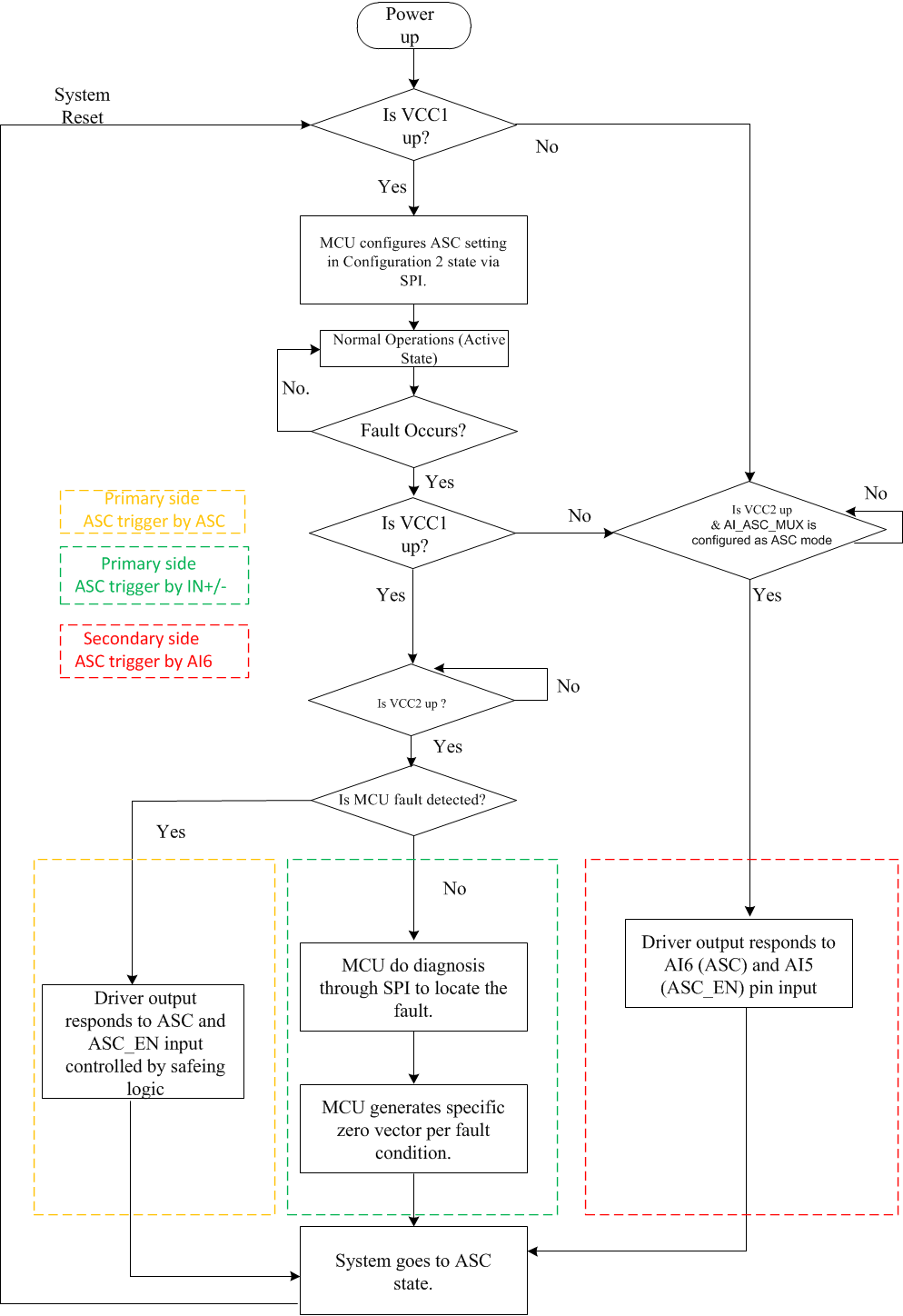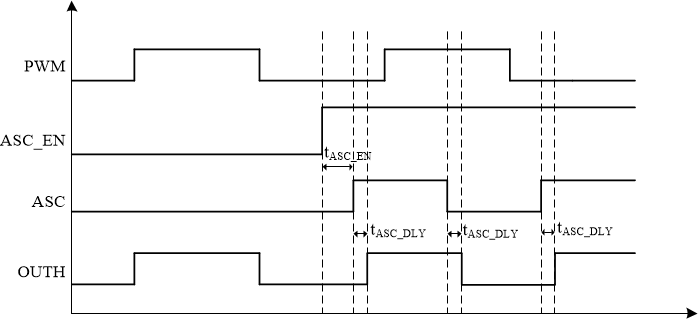JAJSKM1C october 2019 – september 2021 UCC5870-Q1
PRODUCTION DATA
- 1
- 1 特長
- 2 アプリケーション
- 3 概要
- 4 Revision History
- 5 Pin Configuration and Functions
- 6 Specifications
-
7 Detailed Description
- 7.1 Overview
- 7.2 Functional Block Diagram
- 7.3
Feature Description
- 7.3.1 Power Supplies
- 7.3.2 Driver Stage
- 7.3.3 Integrated ADC for Front-End Analog (FEA) Signal Processing
- 7.3.4 Fault and Warning Classification
- 7.3.5
Diagnostic Features
- 7.3.5.1 Undervoltage Lockout (UVLO) and Overvoltage Lockout (OVLO)
- 7.3.5.2 CLAMP, OUTH, and OUTL Clamping Circuits
- 7.3.5.3 Active Miller Clamp
- 7.3.5.4 DESAT based Short Circuit Protection (DESAT)
- 7.3.5.5 Shunt Resistor based Overcurrent Protection (OCP) and Short Circuit Protection (SCP)
- 7.3.5.6 Temperature Monitoring and Protection for the Power Transistors
- 7.3.5.7 Active High Voltage Clamping (VCECLP)
- 7.3.5.8 Two-Level Turn-Off
- 7.3.5.9 Soft Turn-Off (STO)
- 7.3.5.10 Thermal Shutdown (TSD) and Temperature Warning (TWN) of Driver IC
- 7.3.5.11 Active Short Circuit Support (ASC)
- 7.3.5.12 Shoot-Through Protection (STP)
- 7.3.5.13 Gate Voltage Monitoring and Status Feedback
- 7.3.5.14 VGTH Monitor
- 7.3.5.15 Cyclic Redundancy Check (CRC)
- 7.3.5.16 Configuration Data CRC
- 7.3.5.17 SPI Transfer Write/Read CRC
- 7.3.5.18 TRIM CRC Check
- 7.4 Device Functional Modes
- 7.5 Programming
- 7.6 Register Maps
- 8 Applications and Implementation
- 9 Power Supply Recommendations
- 10Layout
- 11Device and Documentation Support
- 12Mechanical, Packaging, and Orderable Information
7.3.5.11 Active Short Circuit Support (ASC)
The active short circuit (ASC) function allows the system to force the state of the power transistor regardless of the PWM input. For cases where the main MCU is not available due to fault or otherwise, a secondary control circuit drives the ASC_EN input high to force the output of the device to the state defined by the ASC input. For the primary side, two dedicated inputs are available for the ASC control. The ASC control is also available on the secondary side using the AI5 and AI6 inputs. To configure the device with the secondary ASC function, the CFG8[AI_ASC_MUX] bit (CFG8) must be configured in ASC mode. In this configuration, AI5 is ASC_EN and AI6 is the ASC input. The operation is identical to what is described for the primary side. Please note that if AI5/AI6 are to be used for the ASC function they are unavailable for OCP/SCP and PS temperature monitoring. When using the secondary side ASC, it is possible that the GM_FAULT will be set (when enabled) if the IN+ state is different than the ASC state. There will be no fault action taken, but the STATUS3[GM_FAULT] will be set. The implementation flow of ASC function is presented in Figure 7-27. This implementation assumes both primary and secondary ASC are used. The secondary ASC covers the failure mode where VCC1 power is down. The primary and secondary ASC functions can be used independently. If both ASC functions are enabled, the secondary ASC has highest priority. The ASC functions are available in all operation states, assuming there is a valid power supply (VCC1 and VCC2 for ASC/ASC_EN or VCC2 for AI5/AI6).
 Figure 7-27 ASC implementation Flowchart
Figure 7-27 ASC implementation Flowchart Figure 7-28 ASC implementation logic.
Figure 7-28 ASC implementation logic.